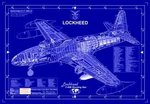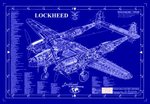syscom3
Pacific Historian
Great post Pete.
Although you argue your points well, I still think that the P80 cannot be considered a WW2 aircraft simply because it was activated right when the war ended and never went on a combat mission. Too bad it was never moved to the PTO where it could have made an interesting "kamikazi" interceptor.
I'd say the best planes of the second world war, when it ended in Aug 1945 were:
Cargo: C47
Fighter: P51
Heavy Bomber: B29
Medium/Light Bomber: A26
Naval fighter: F4U
Although you argue your points well, I still think that the P80 cannot be considered a WW2 aircraft simply because it was activated right when the war ended and never went on a combat mission. Too bad it was never moved to the PTO where it could have made an interesting "kamikazi" interceptor.
I'd say the best planes of the second world war, when it ended in Aug 1945 were:
Cargo: C47
Fighter: P51
Heavy Bomber: B29
Medium/Light Bomber: A26
Naval fighter: F4U


